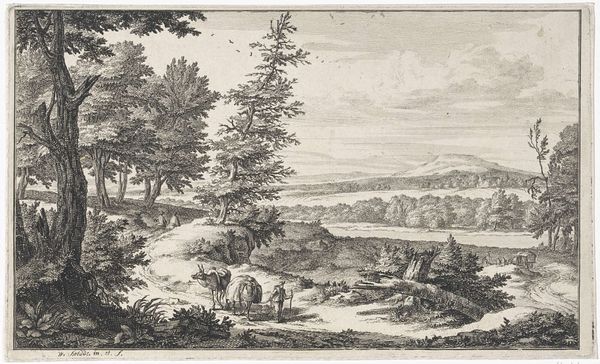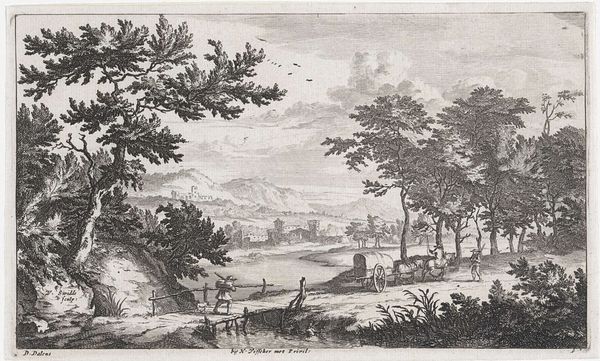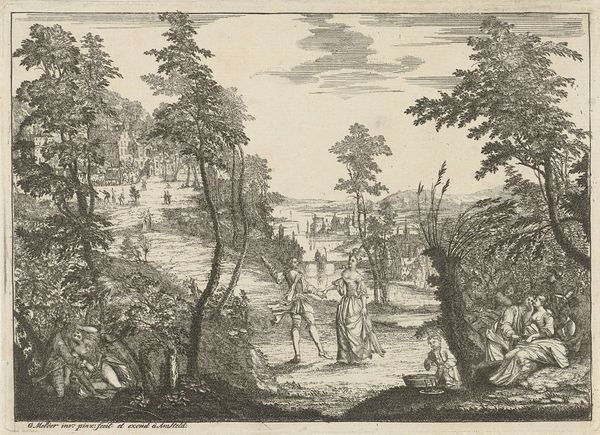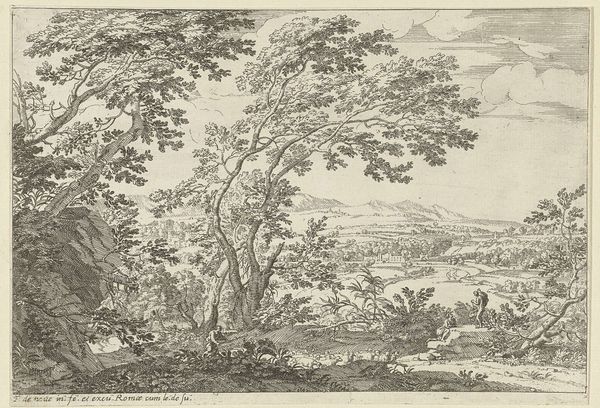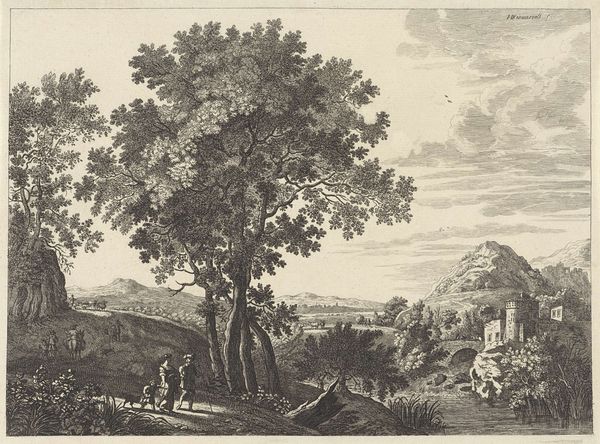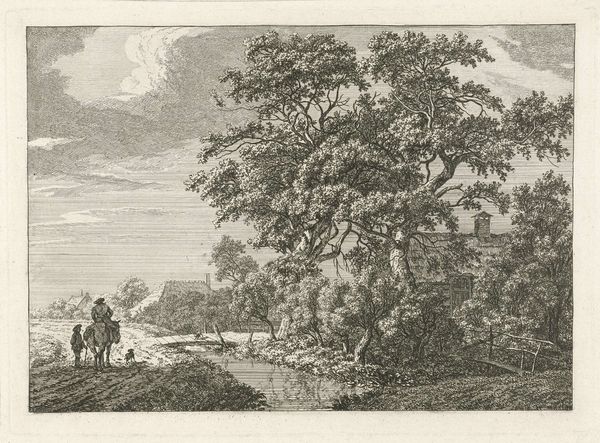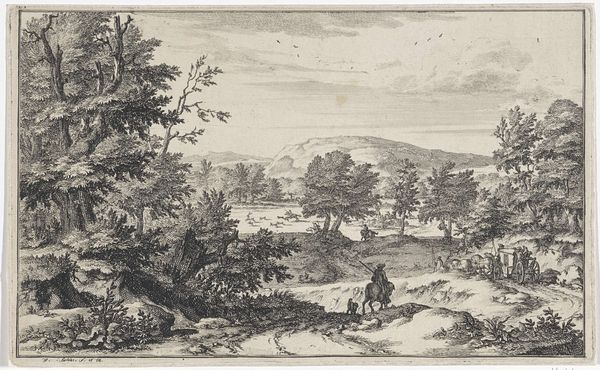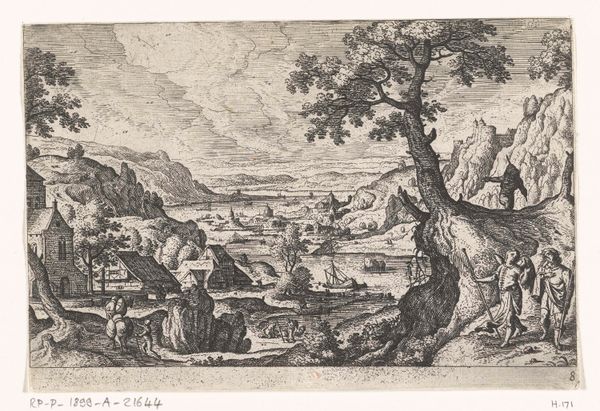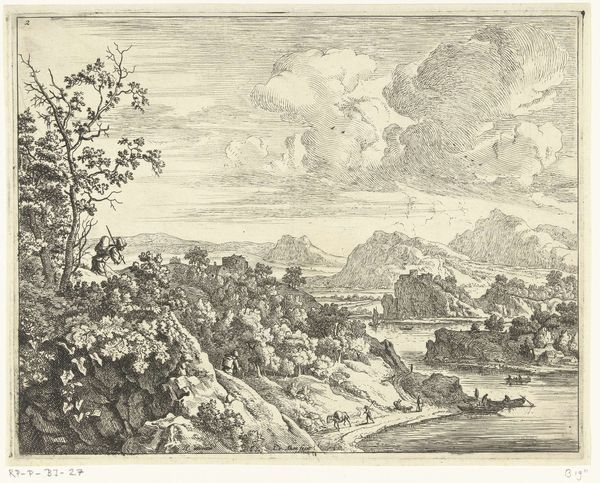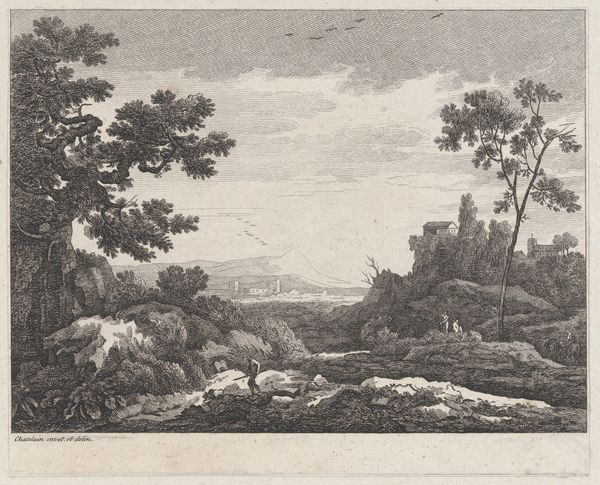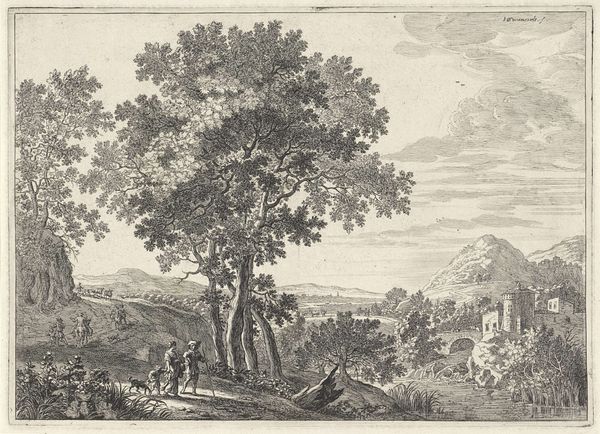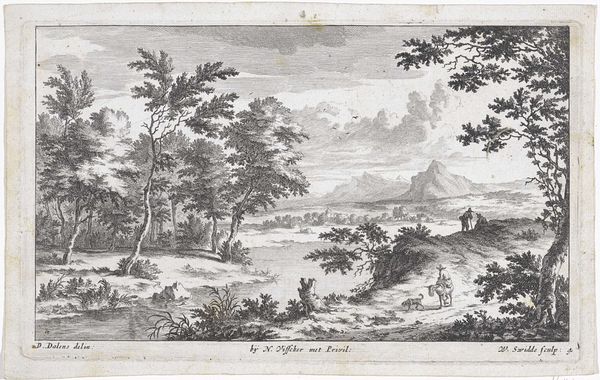
drawing, print, etching, pen, engraving
#
drawing
#
baroque
#
pen drawing
# print
#
etching
#
landscape
#
pen
#
engraving
Dimensions: height 140 mm, width 233 mm
Copyright: Rijks Museum: Open Domain
Willem Swidde made this print, "Schaapskudde in een open landschap" or "Flock of sheep in an open landscape," probably toward the end of the 17th century. The key thing to understand about printmaking is that it is an indirect medium. The image is not drawn directly; instead, it’s bitten into a metal plate with acid, then inked and pressed onto paper. Here, Swidde has used etching, a printmaking technique which allows for finely modulated lines and details, as you can see in the distant foliage and the wooly texture of the sheep. The artist would need to be both a skilled draughtsman, capable of rendering a convincing landscape, and familiar with the technical and chemical processes required to create the printing plate. Consider, too, how this type of image would have been consumed. Prints were relatively inexpensive compared to paintings, and could be widely distributed, playing a key role in the commercialization of art. So this apparently bucolic scene also gives us insight into the development of a new art market, and a new kind of artistic labor.
Comments
No comments
Be the first to comment and join the conversation on the ultimate creative platform.
